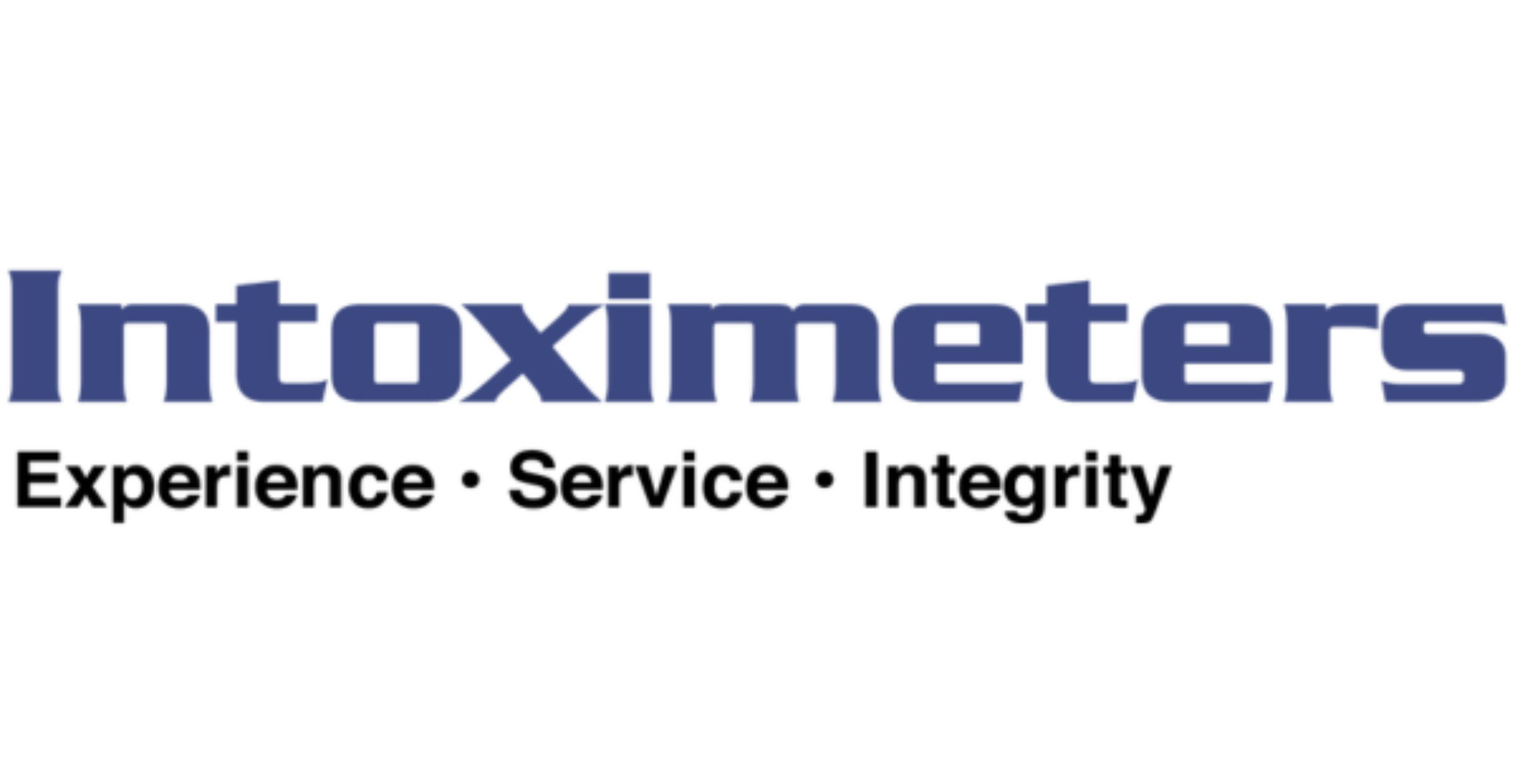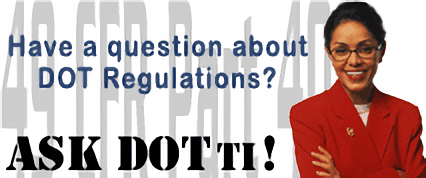General FAQ
The target value of a standard is the result that is expected to be reported on an alcohol testing device when an accuracy check or calibration is performed. The target value of the gas standard used must be known prior to conducting an accuracy check or calibration.
Also known as Expected Value
Return Material Authorization form.
Whenever you ship anything to us, an RMA form is required. You can fill out the form online and print a copy, or you can download and print a hard copy of the form to fill out by hand. Forms & Applications
Radio Frequency Interference
A Quality Assurance Plan is a set of guidelines followed by the user of the equipment to insure accurate results.
The U.S. Department of Transportation workplace testing program requires that the manufacturer of the breath testing instrument publish a QAP and have it approved by NHTSA (National Highway Traffic Safety Administration). It also requires that the users of instruments in the DOT testing program follow the requirements of the QAP.
Designated Employer Representative. An employee authorized by the employer to take immediate action to remove employees from safety-sensitive duties, or cause employees to be removed from these covered duties, and to make required decisions in the testing and evaluation processes. The DER also receives test results and other communications for the employer. Service Agents cannot act as DERs.
Alcohol Screening Device. Alcohol testing device or method that can only be used for DOT screening tests and does not meet the requirements for performing confirmation tests.
Notice of Proposed Rulemaking. When the federal government wishes to make changes to the Code of Federal Regulations, an NPRM is issued to describe the proposed change(s) and to allow the public time to comment on the changes.
This is important to Breath Alcohol Technicians and instructors because they must be aware of changes and potential changes to the regulations in 49 CFR Part 40 in order to conduct drug & alcohol tests correctly.
Office of Drug and Alcohol Policy and Compliance. This is the division of the Department of Transportation that administers 49 CFR Part 40 regulations. This is the only office that can provide definitive guidance for any questions related to Part 40 procedures.
A calibration log is a record of accuracy checks and calibrations performed on a specific breath alcohol testing instrument.
A calibration log is a record-keeping requirement of the U.S. Department of Transportation alcohol testing program and must be retained for at least 2 years or as long as your instrument is in service. Information recorded in the log must include the date and time of the procedure, who performed it, where it was performed, the lot number of the gas standard used, the expected/target value and the result.
The logbook is necessary to prove the accuracy of your testing device at the time of a particular test as well as to show the stability and accuracy of your instrument over time.
A Calibration Adjustment is the procedure used to set (or adjust) an instrument’s sensitivity to properly report the known value of a standard or, in other words, to force an instrument to read in conformance to a known standard.
This procedure is done ONLY when your device’s Accuracy Check is no longer within the tolerance levels set by your Quality Assurance Program or other jurisdictional regulations.
All calibrations must be followed by an Accuracy Check to insure that the adjustment is correct.
Expected value is the result that is “expected” to be reported on an alcohol testing device when an accuracy check or calibration is performed. The expected value of the gas standard used must be known prior to conducting an accuracy check or calibration.
Also known as Target Value
Mouth alcohol is alcohol that remains in the mouth after a recent drink or after use of mouthwash or another product that contains alcohol. Mouth alcohol dissipates from the mouth in a very short time, typically in 10-15 minutes.
Prior to conducting an evidential breath alcohol test, the subject must be observed for 15 minutes to insure that any residual alcohol in the mouth has dissipated.
Breath Alcohol Technician. An individual trained to perform breath alcohol tests. This designation indicates that the person is proficient with a specific model of alcohol testing instrument.
In the U.S. Department of Transportation alcohol testing program, BATs are required to meet specific training requirements prior to being authorized to perform alcohol tests on transportation workers.
Preliminary Breath Test. This term is generally used in law enforcement testing to describe a screening test done to establish probable cause for driving under the influence of alcohol.
Preliminary Breath Tester. Law enforcement term referring to the testing device used to perform a screening test for probable cause.
Also known as PAS, or Preliminary Alcohol Screener.
A standard is a benchmark used for comparison – something with a known value.
Also called an ethanol standard, gas standard, or calibration standard. Can be either a solution of ethanol in water (wet bath simulator) or a mixture of pressurized gas, usually ethanol in nitrogen (dry gas standard) certified to produce a sample containing a predictable alcohol concentration.
Depending upon the regulations governing your alcohol testing program, you could choose either a WET BATH standard or a DRY GAS standard.
An estimate is a way for you to find out approximately how much it will cost to repair an instrument. Estimates for repair are available upon request.
The instrument(s) needing repair and a copy of the completed Return Material Authorization (RMA) form should be sent to Intoximeters. There is a section on the Return Authorization Form that allows you to request an estimate. This section of the RMA form requests that a fax number or email address for the contact person is included so that Intoximeters can forward an estimated quotation to you for your review and approval.
A minimum $40.00 checkout charge will be charged for each instrument requiring an estimate. This charge will also be assessed for any customer requiring an estimate to issue a purchase order or to approve a payment via credit card.
Repairs are corrective in nature rather than preventive (as in a recertification). Intoximeters products are well-built, long-lasting, and rugged but something unexpected may occur to prevent your instrument from operating properly.
Our specially trained Technicians are experts at diagnosing and fixing these unexpected problems. Whether your instrument is still under the original warranty, warranty from recertification, or has not been in service for years, we will strive to get your device back in proper working order as quickly as possible.
To send an instrument in for repair, please complete the on-line service Return Authorization Form available in the Forms section of the website.
National Highway Traffic Safety Administration
NHTSA is an agency within the U.S. Department of Transportation. They are responsible for many things that are transportation-related. One of their functions is to evaluate and approve breath alcohol testing instruments.
The U.S. DOT alcohol testing program requires the use of instruments on one of NHTSA’s Conforming Products Lists (CPL).
Conforming Products List – evidential
Conforming Products List – screening
Alcohol Testing Form. This is the document on which we record alcohol test data including the subject’s name, company name, company address, operator name & address, and the test result.
There is a special ATF that is required when conducting alcohol tests under the U.S. DOT testing program. Intoximeters carries these forms for purchase as well as an alternate form, called non-DOT, which can be used for non-regulated testing.
Department of Transportation
Refers to the United States Department of Transportation in Washington, DC. This department of the federal government administers alcohol and drug testing requirements of the Omnibus Transportation Employee Testing Act of 1991. The Omnibus Act established uniform alcohol and drug testing procedures to be used by all DOT Operating Agencies.
Recertification is a long-term, preventive maintenance program to help you get the longest possible life from the instrument. This program provides a thorough evaluation of your instrument and, if required, we will adjust the instrument to comply with our strict factory specifications.
Intoximeters guarantees our evaluation of the fuel cell by providing a one-year parts & labor warranty from the date of the instrument’s recertification. If the fuel cell (or any other part replaced during the recertification) fails during this time, we will replace it.
A Quality Assurance Plan is a set of guidelines followed by the user of the equipment to insure accurate results. It is sometimes referred to as a “maintenance program” or “maintenance protocol”.
Each jurisdiction defines its own policies for quality assurance.
For example, the U.S. Department of Transportation workplace testing program requires that the manufacturer of the breath testing instrument publish a QAP and have it approved by NHTSA (National Highway Traffic Safety Administration). It also requires that the users of instruments in the DOT testing program follow the requirements of the QAP.
Also called a “Calibration Check” or “Proficiency Test” or “External Calibration Check”.
The accuracy of any testing instrument should be checked periodically per the regulations governing your breath testing program. An accuracy check is a procedure used to test your instrument’s ability to read a known standard within a given tolerance. This is accomplished by running a standard with a known alcohol concentration through the instrument’s sampling system and verifying that the result is within an acceptable tolerance range of the expected value of the standard. It is much the same as running a sample on a subject but, in this case, the operator knows what result the instrument should produce. It is checking to see that a given known gas value registers correctly within tolerances defined by your testing protocol.
This procedure is called an “accuracy check” and is sometimes referred to as a “calibration check” because it is a test (check) of proper calibration. If the reading produced by the instrument is outside of the acceptable tolerance, the device must be calibrated.
Accuracy checks serve 2 purposes:
Validating Subject test results. If your testing instrument reads the known standard gas within a defined tolerance range then it is reasonable to assume the device will provide accurate readings on a subject test. Any subject tests performed between two successful accuracy checks are, by default, accurate.
Verifying long term accuracy. By documenting your accuracy checks in a calibration logbook, you can demonstrate the instrument’s performance over time.

